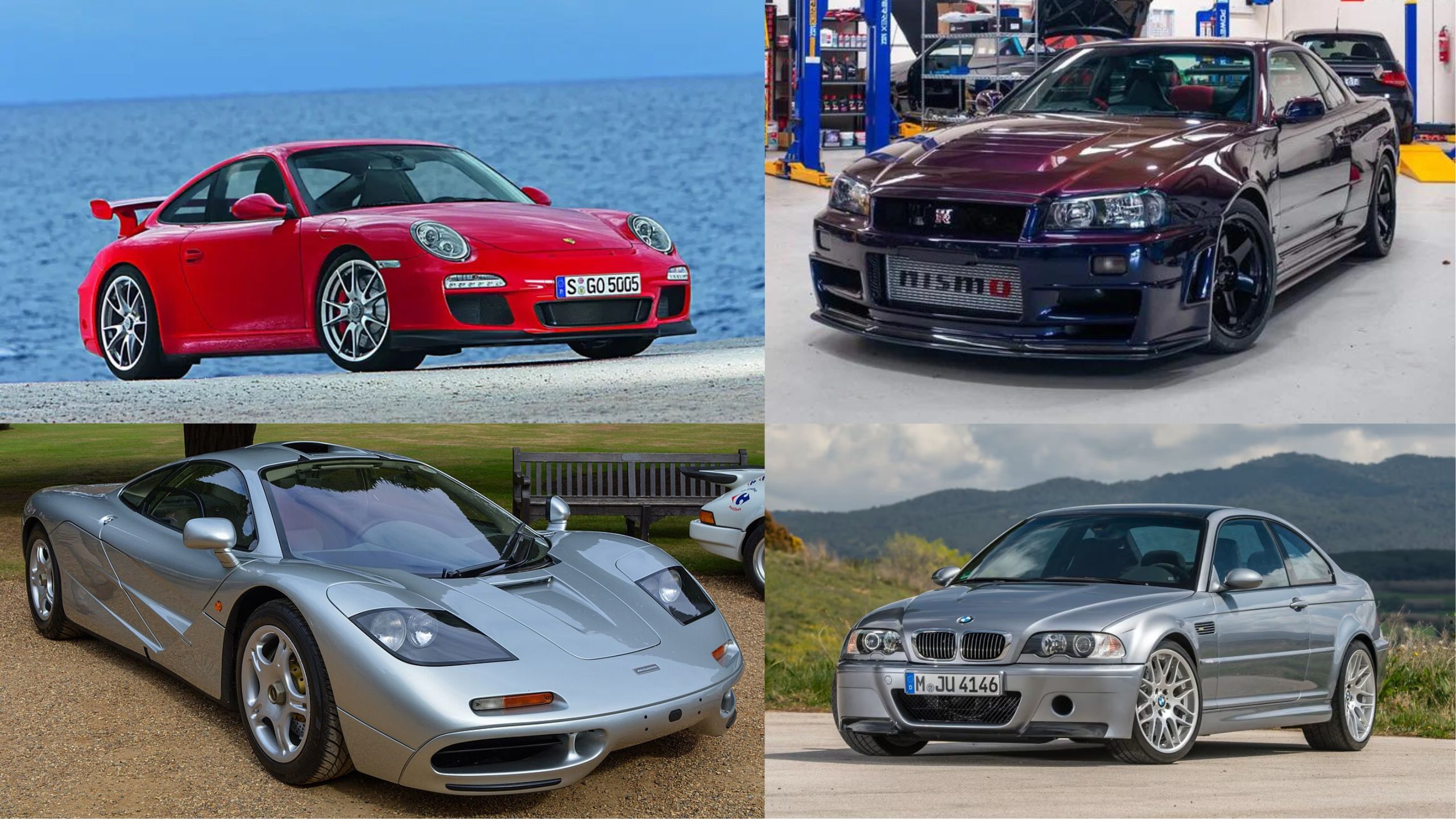In the volatile world of automotive investments, most vehicles are known for rapid depreciation the moment they leave the showroom floor. However, a select group of sports cars has defied this trend, becoming not just mechanical marvels but also lucrative financial assets.
The collector car market has been experiencing a fascinating transformation, with certain models increasing in value due to a perfect storm of factors: limited production runs, historical significance, technological innovation, and pure automotive nostalgia.
These appreciating sports cars represent more than just transportation; they are rolling pieces of engineering art that capture the imagination of collectors and enthusiasts worldwide. Factors driving their value include rarity, iconic design, performance pedigree, and cultural significance.
Some are modern supercars with cutting-edge technology, while others are classic models that have become legends in automotive history.
From limited-edition European performance machines to Japanese cult classics, these cars have proven to be more than just depreciating assets they’re investments that can potentially outperform traditional financial instruments.
For automotive investors, collectors, and passionate enthusiasts, understanding which sports cars are gaining value is crucial.
This comprehensive guide will explore ten remarkable sports cars that are not just holding their value, but actively appreciating, offering insights into what makes these particular models so special in the current market.
1. Porsche 911 GT3 RS (997 Generation)
The Porsche 911 GT3 RS from the 997 generation represents a pinnacle of automotive engineering and collector desirability.
Produced between 2006 and 2011, this high-performance variant of the iconic 911 has become a true blue-chip investment in the sports car market. Its appreciation is driven by several key factors that make it irresistible to collectors and enthusiasts alike.
Mechanically, the 997 GT3 RS was a pure driver’s car, featuring a naturally aspirated 3.8-liter flat-six engine producing 450 horsepower in its most advanced iteration.
Unlike many modern sports cars relying on turbocharging, this model represented the last generation of naturally aspirated, high-revving Porsche engines that delivered an unparalleled driving experience.
The car’s lightweight construction, featuring extensive use of carbon fiber and aluminum, made it a track-focused machine that bridged the gap between a road car and a racing vehicle.
Collectors particularly value the limited production numbers. Porsche manufactured only a few thousand units of the 997 GT3 RS, with certain special editions being even rarer.

The most sought-after models, like the GT3 RS 4.0, were produced in extremely limited quantities, sometimes fewer than 600 units worldwide.
This scarcity, combined with the model’s reputation as the ultimate driver’s 911, has driven values skyward.
The car’s appreciation is also tied to its racing DNA. The 997 GT3 RS was essentially a road-legal race car, developed directly from Porsche’s motorsport experience.
Its suspension, aerodynamics, and engineering were derived from competition models, giving it a level of authenticity that resonates with serious automotive enthusiasts.
Many examples have been carefully preserved, with low mileage, and maintained in pristine condition, further enhancing their collectible status.
Market trends show these cars have seen remarkable value growth. While original prices ranged from $130,000 to $200,000 depending on the specific variant, prime examples now command prices well over $500,000, with some rare editions approaching $750,000.
This represents an appreciation of 200-300% in just over a decade, making the 997 GT3 RS not just a car, but a genuine investment asset.
2. Nissan GT-R R34 Nismo Z-Tune
The Nissan GT-R R34 Nismo Z-Tune stands as a legendary Japanese performance icon that has become increasingly valuable in recent years.
Produced in extremely limited numbers, this ultimate expression of the beloved R34 GT-R represents the pinnacle of Japanese automotive engineering from the late 1990s and early 2000s.
Nismo, Nissan’s motorsport and performance division, created only 19 Z-Tune models, making it one of the rarest and most collectible Japanese sports cars in history.
The Z-Tune was essentially a complete rebuild of existing R34 GT-Rs, with each car stripped down and reconstructed to near-racing specifications.
Powered by a hand-built 2.8-liter inline-six engine, these cars were capable of producing around 500 horsepower, an incredible figure for its time.
The car’s mystique is deeply rooted in its cultural significance. The R34 GT-R became a global phenomenon through video games, movies, and its legendary performance in motorsport.
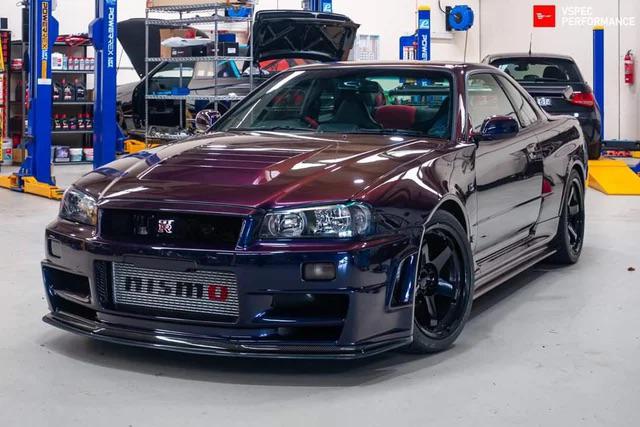
The Z-Tune represents the ultimate iteration of this iconic model, created as a farewell to the R34 generation.
Each car was meticulously crafted, with Nismo acquiring low-mileage customer cars and completely rebuilding them to an unprecedented standard of performance and quality.
Collectors and enthusiasts have long revered the GT-R, but the Z-Tune has reached near-mythical status.
Original pricing was around $150,000, but today, these rare machines can command prices well over $1 million.
The combination of extreme rarity, historical significance, and near-perfect preservation of the GT-R’s legacy has driven its value to astronomical heights.
The car’s technological prowess was revolutionary for its time. Advanced all-wheel-drive systems, sophisticated electronics, and a level of performance that could challenge much more expensive supercars made the Z-Tune a true engineering marvel.
Each example was essentially a hand-built masterpiece, with Nismo engineers spending hundreds of hours perfecting each vehicle.
3. Ferrari 458 Speciale
The Ferrari 458 Speciale represents a pivotal moment in Ferrari’s mid-engine sports car evolution, marking the last of the naturally aspirated V8 mid-engine cars before the introduction of turbocharged engines.
Produced between 2013 and 2015, this limited-edition model has quickly become a highly sought-after collector’s item, with values appreciating significantly in recent years.
Ferrari only produced 498 units of the 458 Speciale, making it exceptionally rare. The car was a track-focused version of the already impressive 458 Italia, with extensive weight reduction, aerodynamic improvements, and a more powerful engine.
Powered by a 4.5-liter naturally aspirated V8 producing 597 horsepower, the Speciale could accelerate from 0-60 mph in just 3 seconds, showcasing Ferrari’s engineering prowess.
The car’s value appreciation is driven by multiple factors. Its status as the last naturally aspirated mid-engine V8 Ferrari makes it a significant milestone in the brand’s history.

Collectors recognize the 458 Speciale as the ultimate expression of Ferrari’s traditional engine philosophy, making it a crucial piece of automotive heritage.
The limited production numbers, combined with its exceptional performance and technical innovation, have made it an instant classic.
Ferrari’s approach to the Speciale was methodical and performance-focused. Extensive use of lightweight materials, including carbon fiber and aluminum, reduced the car’s weight by 90 kg compared to the standard 458 Italia.
Advanced aerodynamic modifications, including innovative active aerodynamic elements, improved the car’s track performance and visual aggression.
Original pricing for the 458 Speciale was around $291,000, but current market values have seen significant appreciation.
Prime examples are now commanding prices between $600,000 and $800,000, representing a potential appreciation of over 150% in less than a decade. Collectors particularly value low-mileage, well-maintained examples that retain their original specifications.
4. McLaren F1
The McLaren F1 is perhaps the most legendary appreciating sports car of the modern era. Produced between 1992 and 1998, this extraordinary machine was the brainchild of Gordon Murray, a renowned automotive engineer who created what many consider the greatest supercar ever made.
With only 106 units produced, including road cars and racing variants, the F1 has become an automotive unicorn that continues to increase in value.
Originally priced at around $1 million, prime examples of the McLaren F1 now command prices well over $20 million, with the most exceptional cars approaching $25 million. This represents an extraordinary appreciation of over 2000% since its initial release.
The car’s unique three-seat configuration, with the driver seated centrally, was revolutionary and remains uncopied by other manufacturers.
Technologically, the F1 was decades ahead of its time. Powered by a naturally aspirated 6.1-liter V12 engine developed by BMW, it produced 627 horsepower and held the record for the world’s fastest production car for over a decade.

The car’s construction utilized cutting-edge materials like carbon fiber and gold foil heat shielding, demonstrating Murray’s obsessive approach to engineering and performance.
Collectors are particularly drawn to the F1’s racing pedigree. The F1 GTR racing variant achieved legendary status by winning the 24 Hours of Le Mans in 1995, defeating purpose-built racing prototypes.
This motorsport success further enhanced the car’s mythical status among automotive enthusiasts and collectors.
Each McLaren F1 was essentially a hand-built masterpiece, with meticulous attention to detail and extraordinary craftsmanship. The car represented the pinnacle of analog supercar design, created before widespread electronic driver aids and complex computer systems.
This purity of design has only increased its appeal to collectors who appreciate automotive heritage.
Also Read: 10 Cars That Are Still Running Strong After 30 Years
5. Toyota Supra MK4 (A80)
The Toyota Supra MK4, particularly the twin-turbo variant, has experienced a remarkable renaissance in value, transforming from an affordable sports car to a highly collectible modern classic.
Produced between 1993 and 2002, the fourth-generation Supra became a cultural icon through motorsport, tuning culture, and its prominent role in popular media like the “Fast and Furious” film franchise.
The 2JZ-GTE engine became legendary for its incredible durability and tuning potential. In stock form, the twin-turbo model produced 320 horsepower, but the engine could be modified to produce well over 1,000 horsepower with relatively minimal modifications.
This reputation for reliability and performance made the Supra a favorite among automotive enthusiasts and tuners worldwide.
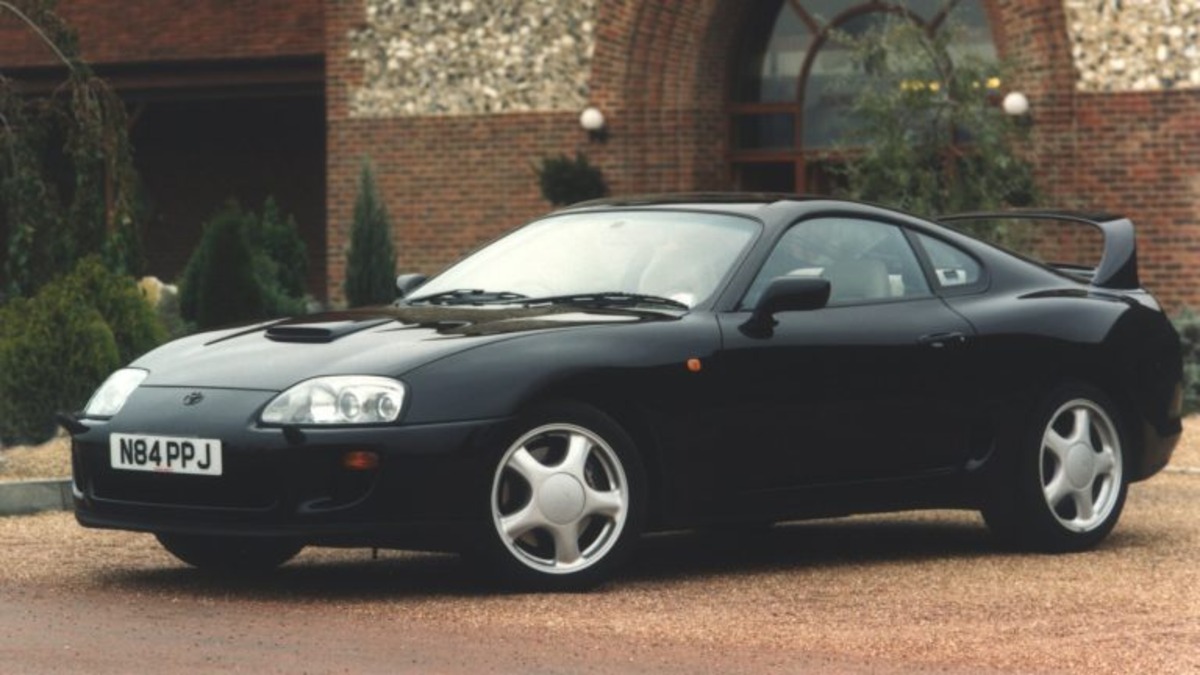
Collectors particularly value the manual transmission models, with the rarest specifications commanding the highest prices. Limited-edition variants like the Japanese-market only TRD 3000GT and the rare lightweight SZ models are especially sought after.
Original prices ranged from $40,000 to $60,000, but today, exceptional examples can fetch between $100,000 and $250,000, with the most pristine, low-mileage models approaching $300,000.
The Supra’s cultural impact cannot be overstated. It represented Japan’s peak of 1990s sports car engineering, competing directly with more expensive European sports cars while offering incredible performance and reliability.
Its design, created by chief designer Isao Suma, was revolutionary, featuring smooth, aerodynamic lines that still look modern decades after its initial release.
Preservation has been key to the Supra’s appreciation. Many examples were modified or destroyed during the peak of the tuner culture, making original, unmodified cars extremely rare.
Collectors now prize examples that remain in factory specification, with low mileage and complete service history.
6. Porsche Carrera GT
The Porsche Carrera GT represents a pinnacle of early 2000s supercar engineering, bridging the gap between race car technology and road-going performance.
Produced between 2003 and 2007, with only 1,270 units manufactured, this mid-engine supercar has become a highly sought-after collector’s item that continues to appreciate.
Originally developed as a potential Le Mans racing prototype, the Carrera GT was powered by a 5.7-liter V10 engine producing 605 horsepower.
The engine was a direct descendant of Porsche’s racing programs, featuring a carbon fiber monocoque chassis and extensive use of lightweight materials. Its manual transmission and pure analog driving experience have made it a favorite among purist collectors.
The car’s value appreciation is driven by its unique position in automotive history. It was one of the last naturally aspirated, manual transmission supercars before electronic systems and turbocharging became standard.
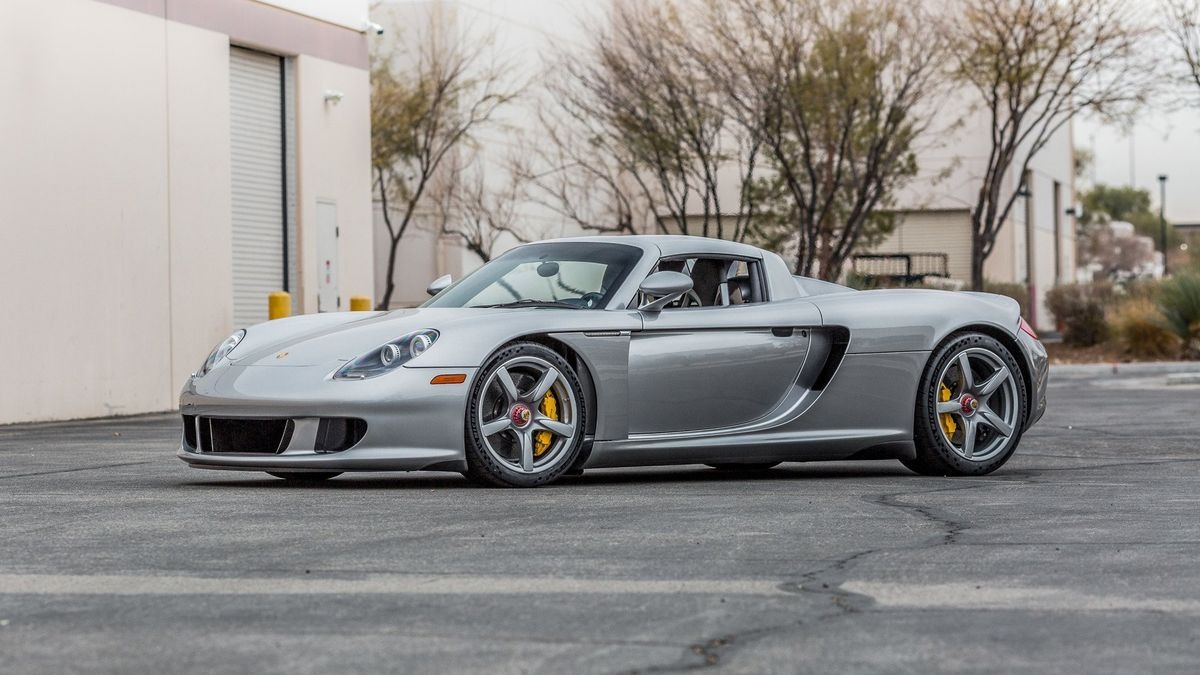
Collectors recognize the Carrera GT as the ultimate expression of Porsche’s engineering philosophy during the early 2000s.
Original pricing for the Carrera GT was around $440,000, but current market values have seen significant appreciation.
Prime examples now command prices between $1.5 million and $2 million, representing a potential appreciation of over 300% in less than two decades. Low-mileage, well-maintained examples with clean histories are particularly valuable.
The Carrera GT’s driving experience is legendary. Its carbon fiber construction, race-derived engine, and six-speed manual transmission create a pure, unfiltered driving experience that is increasingly rare in modern supercars.
This mechanical authenticity has only increased its appeal among collectors and driving enthusiasts.
7. Ferrari 512 BB/BBi
The Ferrari 512 BB and BBi, produced between 1976 and 1984, represent a pivotal moment in Ferrari’s mid-engine sports car evolution.
These models were the direct successors to the legendary 365 GT4 BB and marked Ferrari’s transition into the modern mid-engine design.
The Berlinetta Boxer (BB) series has seen significant appreciation in recent years, with collectors recognizing its historical significance.
Powered by a 5.0-liter flat-12 engine mounted longitudinally in the mid-rear position, these cars produced between 360 and 380 horsepower.
The BBi variant introduced fuel injection, improving reliability and performance. Only 2,323 units were produced across both variants, making them relatively rare in the context of Ferrari’s production numbers.
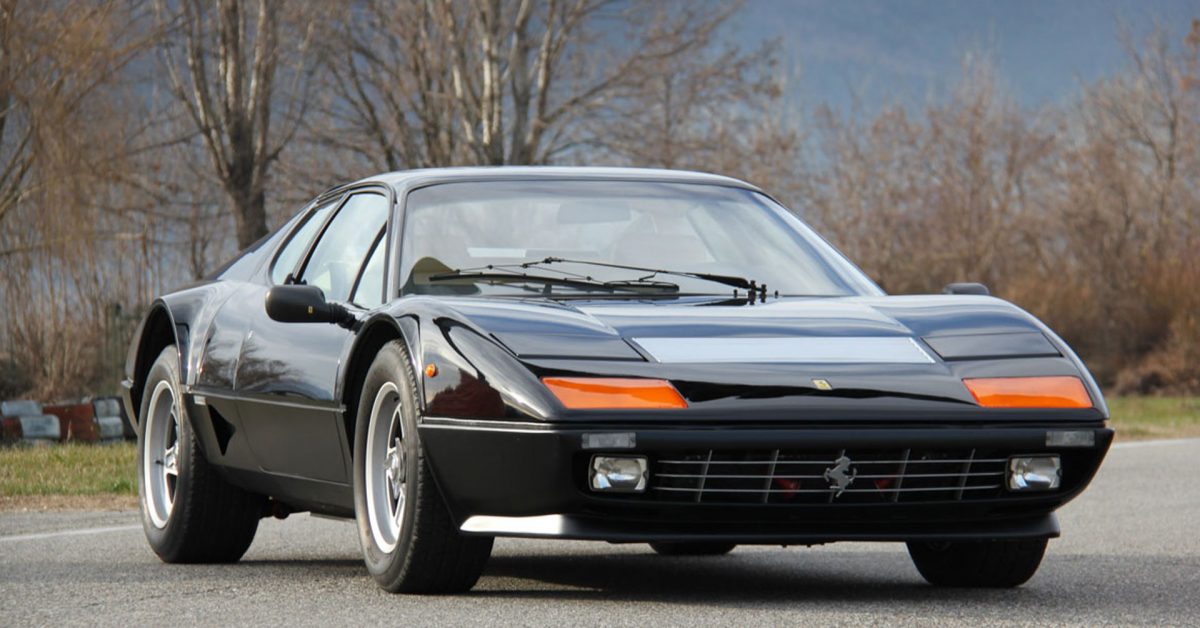
Collectors are particularly drawn to the 512 BB’s pure analog design and historical significance. It represents the last of Ferrari’s carbureted sports cars and the transition to more modern fuel-injected systems.
The car’s design, created by Leonardo Fioravanti at Pininfarina, is considered one of the most beautiful Ferrari designs of the era.
Original prices varied between $50,000 and $100,000 when new, but current market values have seen dramatic appreciation.
Exceptional examples now command prices between $350,000 and $600,000, with particularly well-preserved or historically significant models potentially reaching higher values. The BBi models are generally more valuable due to their more advanced fuel injection system.
The 512 BB’s driving experience is pure and unfiltered, characteristic of Ferrari’s approach to sports car design in the 1970s and early 1980s. Its mid-engine layout, powerful flat-12 engine, and analog driving characteristics make it a favorite among purist collectors who appreciate automotive heritage.
8. Lexus LFA
The Lexus LFA represents a remarkable achievement in automotive engineering, a limited-production supercar that showcased Toyota’s technological capabilities.
Produced between 2010 and 2012, with only 500 units manufactured worldwide, the LFA has quickly become a highly collectible modern classic.
Developed over a decade, the LFA featured a revolutionary 4.8-liter V10 engine designed in collaboration with Yamaha.
The engine could rev from idle to its 9,000 rpm redline in just 0.6 seconds, making it one of the most responsive naturally aspirated engines ever created. Each engine was hand-built by a single technician, with their signature etched on the engine block.
The car’s construction was equally impressive, utilizing extensive carbon fiber technology developed through Toyota’s motorsport programs.

The entire body was constructed from carbon fiber-reinforced polymer, significantly reducing weight while maintaining exceptional structural rigidity. This advanced construction made the LFA a technological showcase of Toyota’s engineering capabilities.
Original pricing for the LFA was around $375,000, with some special editions reaching close to $500,000. Current market values have seen significant appreciation, with exceptional examples now commanding between $750,000 and $1.2 million.
Limited-edition models like the Nürburgring Package are particularly valuable, with some examples approaching $1.5 million.
Collectors are drawn to the LFA’s unique combination of technological innovation, limited production, and its status as Lexus’s first and only true supercar.
The car represents a singular moment in automotive history, showcasing what Toyota was capable of when freed from traditional constraints.
9. BMW M3 E46 CSL
The BMW M3 E46 CSL (Coupe Sport Leichtbau, or “Lightweight”) represents the pinnacle of the beloved E46 generation M3, produced in extremely limited numbers between 2003 and 2004.
With only 1,383 units manufactured, this special edition has become a highly sought-after collector’s car that continues to appreciate.
Designed as a lightweight, track-focused version of the already exceptional E46 M3, the CSL featured extensive weight reduction and performance modifications.
Carbon fiber components, including a unique roof and lightweight interior panels, reduced the car’s weight by approximately 110 kg compared to the standard M3.
The 3.2-liter inline-six engine was modified to produce 360 horsepower, with a unique intake and exhaust system.
The CSL’s driving experience was pure and unfiltered, representing BMW’s commitment to driver engagement. A single-mass flywheel, upgraded suspension, and track-focused design made it one of the most engaging driver’s cars of its era.
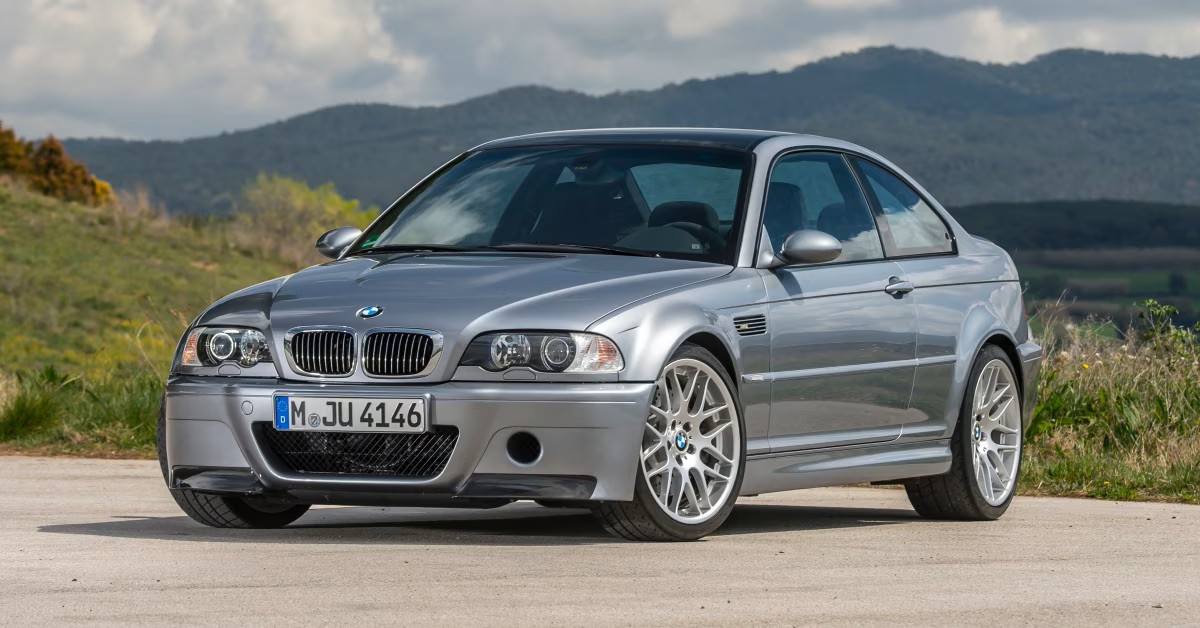
The car was essentially a road-legal racing machine, with every modification focused on performance and driving dynamics.
Original pricing for the M3 CSL was around $65,000, but current market values have seen dramatic appreciation. Exceptional, low-mileage examples now command prices between $150,000 and $250,000, representing a potential appreciation of over 300%.
Collectors particularly value examples with low mileage, complete service history, and original specifications.
The car’s limited production, combined with its technological innovations and pure driving experience, has made the E46 M3 CSL a true modern classic.
It represents the last of the naturally aspirated, purely mechanical performance cars before the widespread adoption of turbocharging and complex electronic systems.
10. Mercedes-Benz SL73 AMG
The Mercedes-Benz SL73 AMG represents an extraordinary piece of automotive history, an ultra-rare high-performance variant of the R129 SL-Class produced in extremely limited numbers between 1999 and 2002.
With only 85 units ever manufactured, this model has become one of the most exclusive and appreciating Mercedes-Benz vehicles in recent years.
Powered by a massive 7.3-liter V12 engine producing 525 horsepower, the SL73 AMG was essentially a road-going supercar disguised as a luxury convertible.
The same engine would later be used in the legendary Pagani Zonda, further enhancing its reputation among automotive enthusiasts. Each car was hand-built by AMG, with extraordinary attention to detail and performance.
The car’s rarity cannot be overstated. With only 85 units produced worldwide, the SL73 AMG is one of the rarest Mercedes-Benz models ever created.
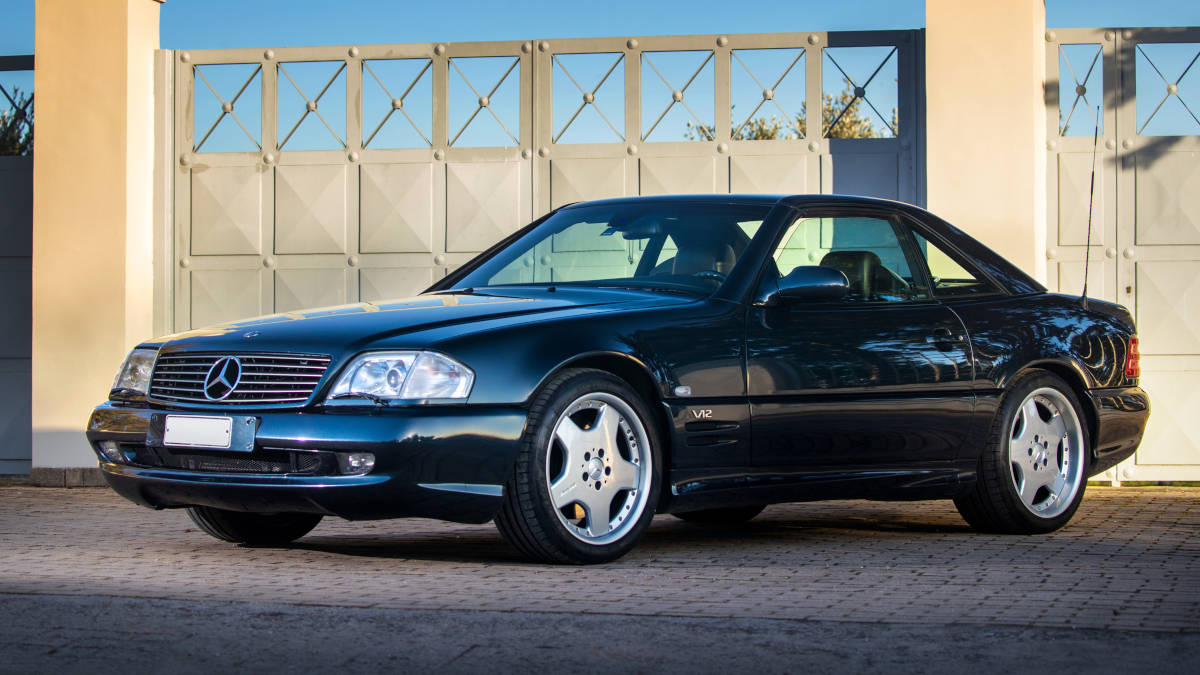
This extreme scarcity, combined with its extraordinary performance and luxurious design, has driven its value to remarkable heights. Original pricing was around $200,000, but current market values have seen exceptional appreciation.
Collectors are drawn to the SL73’s unique combination of performance, luxury, and exclusivity. It represents a moment in automotive history when manufacturers were willing to create extraordinary, no-compromise performance vehicles without significant regard for production costs.
The car’s massive V12 engine, convertible body, and AMG modifications make it a truly special machine.
Current market values for the SL73 AMG range between $500,000 and $1 million, depending on condition, mileage, and provenance.
Exceptionally preserved examples with complete service history and low mileage can command even higher prices.
The car’s appreciation is driven by its extreme rarity, performance credentials, and status as a true automotive unicorn.
Also Read: 12 Japanese Cars That Last Forever With Basic Maintenance

